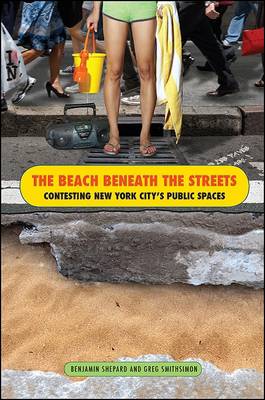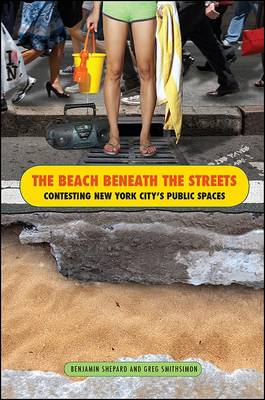
- Afhalen na 1 uur in een winkel met voorraad
- Gratis thuislevering in België vanaf € 30
- Ruim aanbod met 7 miljoen producten
- Afhalen na 1 uur in een winkel met voorraad
- Gratis thuislevering in België vanaf € 30
- Ruim aanbod met 7 miljoen producten
Zoeken
The Beach Beneath the Streets
Contesting New York City's Public Spaces
Benjamin Heim Shepard, Gregory Smithsimon
€ 45,95
+ 91 punten
Omschrijving
Focusing on the liberating promise of public space, The Beach Beneath the Streets examines the activist struggles of communities in New York City--queer youth of color, gardeners, cyclists, and anti-gentrification activists--as they transform streets, piers, and vacant lots into everyday sites for autonomy, imagination, identity formation, creativity, problem solving, and even democratic renewal. Through ethnographic accounts of contests over New York City's public spaces that highlight the tension between resistance and repression, Shepard and Smithsimon identify how changes in the control of public spaces--parks, street corners, and plazas--have reliably foreshadowed elites' shifting designs on the city at large. With an innovative taxonomy of public space, the authors frame the ways spaces as diverse as gated enclaves, luxury shopping malls, collapsing piers and street protests can be understood in relation to one another. Synthesizing the fifty-year history of New York's neoliberal transformation and the social movements which have opposed the process, The Beach Beneath the Streets captures the dynamics at work in the ongoing shaping of urban spaces into places of repression, expression, control, and creativity.
Specificaties
Betrokkenen
- Auteur(s):
- Uitgeverij:
Inhoud
- Aantal bladzijden:
- 256
- Taal:
- Engels
- Reeks:
Eigenschappen
- Productcode (EAN):
- 9781438436203
- Verschijningsdatum:
- 3/06/2011
- Uitvoering:
- Paperback
- Formaat:
- Trade paperback (VS)
- Afmetingen:
- 155 mm x 227 mm
- Gewicht:
- 344 g

Alleen bij Standaard Boekhandel
+ 91 punten op je klantenkaart van Standaard Boekhandel
Beoordelingen
We publiceren alleen reviews die voldoen aan de voorwaarden voor reviews. Bekijk onze voorwaarden voor reviews.











